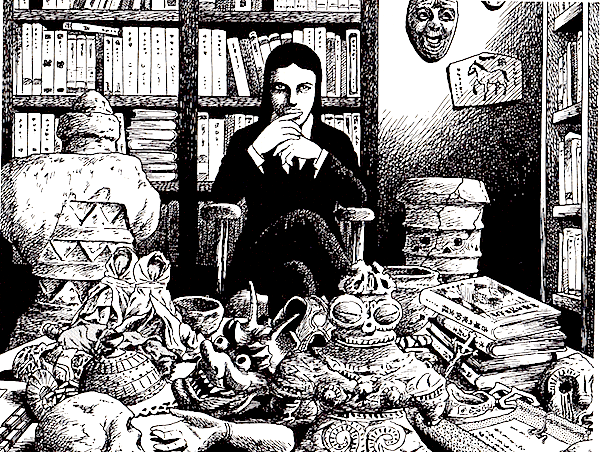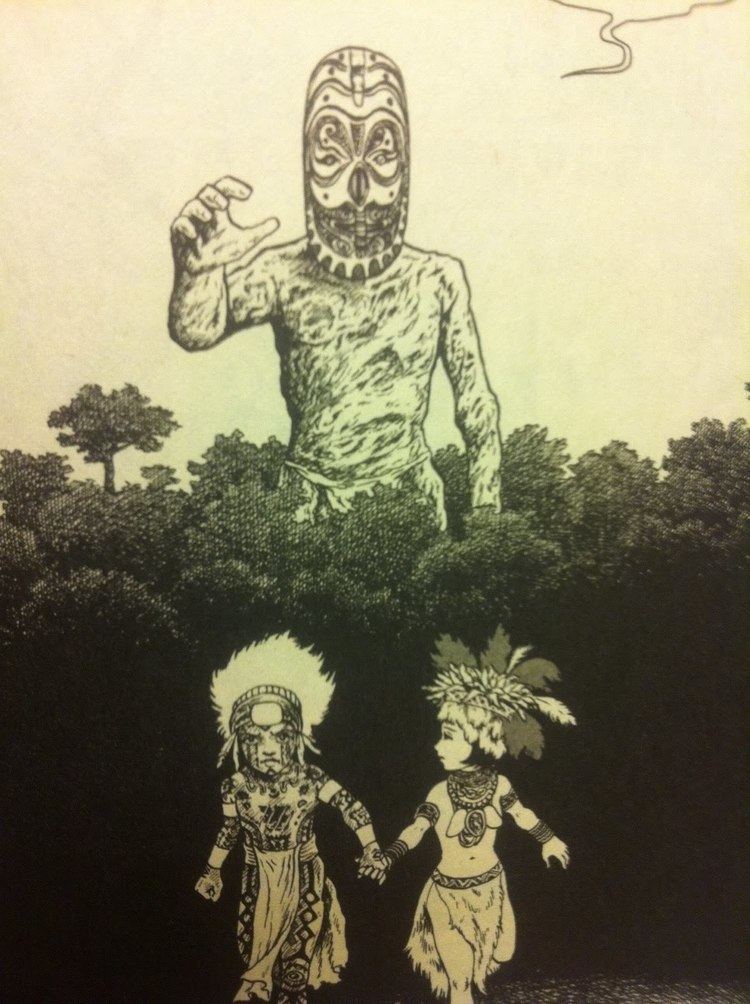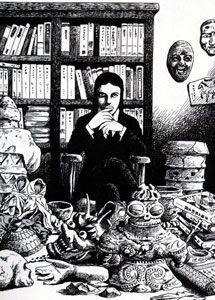Nationality Japanese Books Shokai shii Role Manga artist | Name Daijiro Morohoshi Years active 1970–present | |
 | ||
Full Name Morohoshi Daijiro諸星 大二郎 Other names Morohoshi Yoshikage諸星 義影 Occupation Manga artist, illustrator, writer Known for Yokai Hunter, Saiyu Yoenden (The Monkey King and other Chinese Legends) Similar People Yukinobu Hoshino, Osamu Tezuka, Hideo Azuma, Shotaro Ishinomori, Yosuke Takahashi | ||
Daijiro Morohoshi (諸星 大二郎, Morohoshi Daijirō, born July 6, 1949 in Karuizawa, Nagano Prefecture, Japan) is a Japanese manga artist. He grew up in Adachi-ku, Tokyo. He is well known for SF comics, allegorical comics and horror/mystery comics based on pseudohistory and folklore. The indirect influence by Cthulhu Mythos also appears here and there in his works.
Contents

Biography

After graduating from high school, Morohoshi worked for the Tokyo metropolitan government for three years.

In 1970, Morohoshi made his professional debut with his short story "Junko Kyōkatsu" (ジュン子・恐喝, Junko, blackmail) in COM.

In 1974, his short story "Seibutsu Toshi" (生物都市, Bio City) was selected in the 7th Tezuka Award. He published Yōkai Hunter (妖怪ハンター, Demon Hunter) series in Weekly Shōnen Jump and he entered the comics industry in earnest. He published Ankoku Shinwa (暗黒神話, Dark Myth), Kōshi Ankokuden (孔子暗黒伝, Dark Biography of Confucius) in the same magazine afterwards.

In 1979, he published the Mud Men series in Monthly Shōnen Champion Zōkan.

In 1983, he published Saiyū Yōenden (西遊妖猿伝, Journey to the West: Monster monkey's Commentary) (The Monkey King and other Chinese Legends) based on "Journey to the West" in Super Action. This work won the grand prize of the fourth Tezuka Osamu Cultural Prize in 2000.
Legacy
Because Morohoshi's style of painting was too unique, his assistants said that they didn't know how to assist him, or Osamu Tezuka said that he could not imitate Morohoshi's painting. Morohoshi's Mud men triggered Haruomi Hosono of Yellow Magic Orchestra, and Hosono wrote "The Madmen" for the album Service. Hosono said that his production company misspelled "Mudmen" with "Madmen". Hayao Miyazaki told that he was strongly influenced by Morohoshi in various media. When Kentaro Takekuma interviewed Miyazaki, he said that he actually wanted Morohoshi to draw Nausicaä of the Valley of the Wind. According to Toshio Okada who was a former representative director of Gainax, Hideaki Anno always said that he wanted to apply the scene where a giant appeared in "Kage no Machi" (影の街, Shadow Town) to his work, and his hope was realized in Neon Genesis Evangelion.
